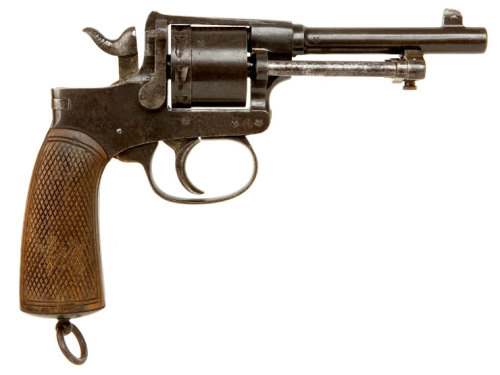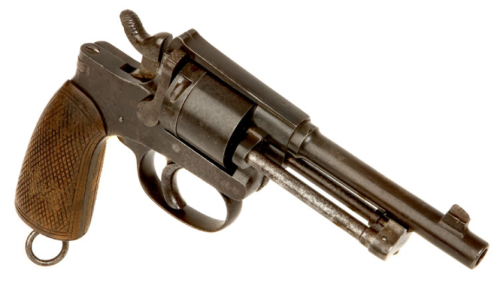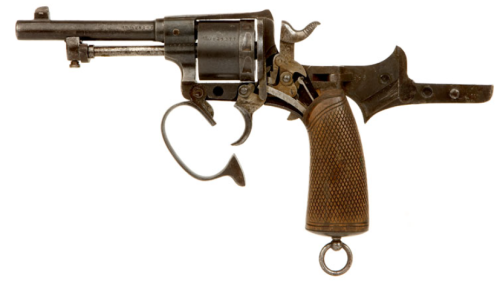peashooter85:The Austrian Rast Gasser Model 1898Introduced in 1898, the Rast Gasser was a double act
peashooter85:The Austrian Rast Gasser Model 1898Introduced in 1898, the Rast Gasser was a double action revolver made to replace various other older Gasser models used by the Austro-Hungarian Army. It was an odd mixture of new technology combined with outdated mechanisms. Among the new parts of its design was its action and cartridge. Instead of having a fixed firing pin, the firing pin was mounted on a transfer bar, and the pistol was discharged when the hammer struck the transfer bar. The transfer bar only moved into position when the hammer was cocked. In older revolvers with a fixed firing pin, the firing pin would be resting on a loaded chamber. Thus any bump or jolt could lead to an accidental discharge. The new transfer bar prevented this. The Rast Gasser was also chambered for the 8mm Gasser cartridge, which was similar, though not interchangeable with the 8mm French Ordnance cartridge. To disassemble the revolver or remove the cylinder, the user only had to pull down on the trigger guard and removed the cylinder pin, which also doubled as the ejection rod.While the Rast Gasser has these new features, it was saddled by the fact that it used a loading gate system. To load or unload the revolver, the user cocked the hammer to half cock, then ejected spent casings one at a time with the ejection rod, and loaded it through the loading gate one cartridge at a time. The 8mm Gasser cartridge was also underpowered compared to other calibers at the time.Despite it’s flaws, the Rast Gasser was a sturdy and reliable revolver. By World War I the Austro-Hungarian Army intended to replace the Rast Gasser with the Roth Steyr M1907 and the Steyr M1912, both of which were semi automatic designs. However, slow production caused the Rast Gasser to remain the primary sidearm of Austro-Hungarian forces. Most were issued to officers, NCO’s, and machine gunners. Around 180,000 were produced by the firm Leopold Gasser Wafenfabrik from 1898 to 1912. A number of copies were produced in Manufacture d'Armes Liégeoise, Belgium chambered in 7.62 Nagant as well. After World War I with the breakup of the Austro Hungarian Empire, they continued to serve in the Austrian Army, Hungary, Czechoslovakia, and Yugoslavia. A number were also sold to Italy and continued to be used in World War II. -- source link
Tumblr Blog : peashooter85.tumblr.com


